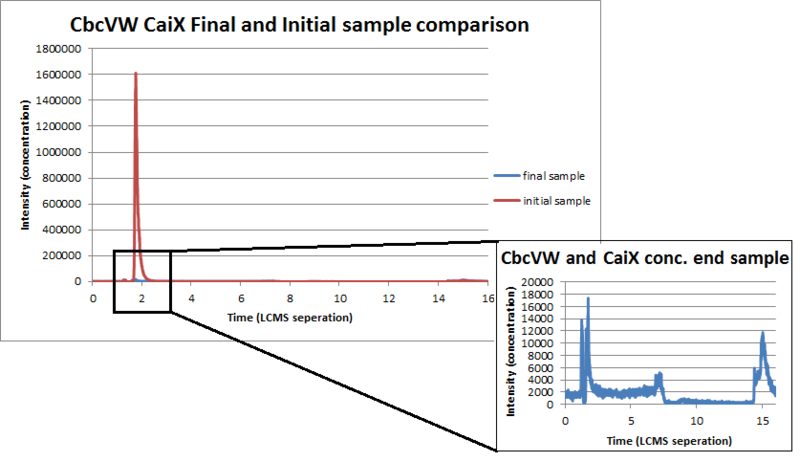Team:UIUC Illinois/Project/Results
From 2013.igem.org

Breakdown
As you may recall cdh ( ) is responsible for the breakdown of L-carnitine down our alternative pathway. We tested the function and production of cdh using a Spectrophotometric NADH pathway. As shown in the following reaction ( PUT REACTION PICTURE BELOW) NADH is a product of when this enzyme converts L-carnitine into 3-dehydrocarnitine. Thus we can conclude if our enzyme is working based on the levels of NADH accumulation after adding L-carnitine to a media containing our cdh enzyme.

Furthermore we are required to test the levels of NADH production naturally in the cytoplasmic extract without the effects of L-carnitine. As depicted below both cytoplasmic extract from the backbone alone and the one with our genes did not result in an increase of NADH over the time span. This indicates that when L-carnitine was added to the cytoplasmic extract of the bacteria containing our gene the NADH concentration increased thus proving our desired enzyme is being produced and functioning as predicted.
Uptake
As you may recall the uptake system depends on two genes. CbcVW is a memebrane complex that allows L-carnitine to be shuttled through the membrane. CaiX is a free floating protein and directs the L-carnitine to our membrane protein thus helping the uptake of l-carnitine. We desired to measure the uptake of L-carnitine with Liquid Chromatography Mass Spectrometer. We will use this device by measuring the concentration of L-carnitine in the supernatant initially and finally. We prepared sample of Nissle with our genes and just with our backbone. Then we took samples of the supernatant initially and finally. By comparing L-carnitine concentrations before and after the amount of L-carnitine that was uptaken will be visible.
By looking at the graphs below you can see that our concentration of L-carnitine finally is drastically lower than the concentration of L-carnitine initially.





 "
"

